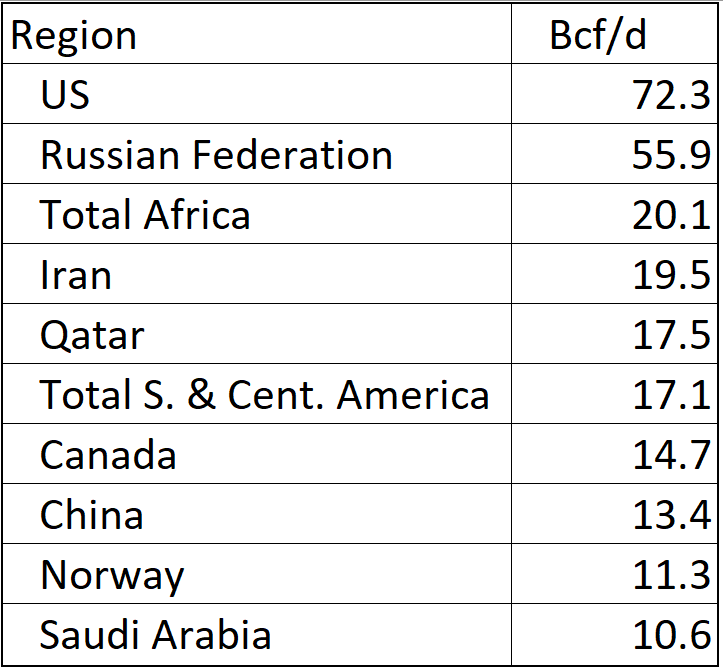Appalachian Basin natural gas production has risen by 200% in the past five years. The region’s gas production now ranks ahead of all but two countries in the world.
Last week in one of their daily Today In Energy columns, the Energy Information Administration highlighted the tremendous growth of natural gas production in the Appalachian Basin:
Shale gas production in the Appalachia region has increased rapidly since 2012, driving an overall increase in U.S. natural gas production. According to EIA’s Drilling Productivity Report, natural gas production in the Appalachia region—namely the Marcellus and Utica shale plays—has increased by more than 14 billion cubic feet per day (Bcf/d) since 2012. Overall Appalachian natural gas production grew from 7.8 Bcf/d in 2012 to 22.1 Bcf/d in 2016 and was 23.8 Bcf/d in 2017, based on EIA data through October 2017.
This 200% increase in Appalachian natural gas production since 2012 has had significant implications in the U.S. market. It has driven down costs for consumers, is fueling a renaissance in the chemical manufacturing industry, and has helped push coal-fired power plants out of business.
Most people likely have no perspective of just how much gas production is now coming out of the Appalachian Basin, so I thought I would illustrate.
According to EIA data, the Appalachian Basin produced 22.1 Bcf/d of natural gas in 2016. Here is how that compared with natural gas production in various regions and countries of the world last year:

Natural gas production around the world in 2016. Data from the 2017 BP Statistical Review.
Only one country in the world other than the U.S. — Russia — produced more natural gas last year than the Appalachian Basin. In fact, the Appalachian produced more gas than even entire continents like Africa and South America. The region also produced more natural gas than any OPEC country.














Leave A Comment